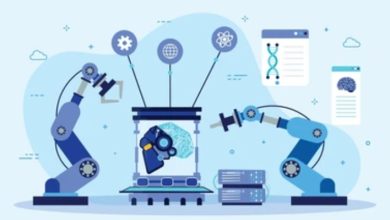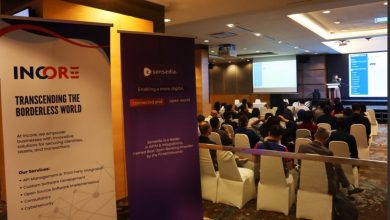Check Point: Rise of AI-Driven Attacks Usher In New Era for Cybercriminals in 2025
Check Point Software 2025 Cyber Security Predictions Reveal How Emerging Technologies and Advanced Cyber Criminal Tactics Will Reshape the Global Threat Landscape

Check Point Software Technologies Ltd. (NASDAQ: CHKP), a pioneer and global leader of cyber security solutions, has announced its cyber security predictions for 2025, outlining key security challenges that organisations will face in the coming year. As businesses embrace new technologies, AI-driven attacks, quantum threats, and cloud vulnerabilities will redefine the digital threat landscape.
Check Point’s Key Findings Point to a Threat-Infested Future
Key highlights from Check Point’s 2025 global cyber security predictions include:
- The rise of AI-driven attacks. AI will become a core enabler of cybercrime in 2025. Threat actors will use AI to generate highly personalised phishing attacks and adaptive malware that can learn from real-time data to avoid detection. Smaller hacker groups will also use AI tools to launch large-scale operations without needing advanced expertise, democratising cybercrime.
- Ransomware hits supply chains hard. Ransomware will grow even more targeted and automated, with attacks on critical supply chains, with possibly large-scale attacks becoming more common, affecting entire industries, with attackers using AI-enhanced phishing emails and deepfake impersonations to bypass defenses.
- Improper AI usage increases data breaches. With AI tools like ChatGPT becoming integral to business processes, accidental data exposure will become a key concern. Employees may inadvertently share sensitive data with external AI platforms, causing unintentional breaches. Organisations will need to establish governance frameworks to monitor AI usage and ensure data privacy.
- Quantum computing poses new threats to encryption. Quantum computing will soon challenge existing encryption methods. Although large-scale quantum attacks are still years away, industries like finance and healthcare must begin adopting quantum-safe encryption to stay ahead of this looming threat.
- Social media exploitation and deepfakes become commonplace. Cybercriminals will increasingly target social media platforms, using personal data for targeted scams and impersonations. AI-powered deepfakes will become more convincing, posing threats to financial transactions and corporate security. Detecting and countering these sophisticated attacks will require real-time AI defenses.
- AI-Driven SOC co-pilots revolutionise security operations. Security Operations Centers (SOCs) will use AI co-pilots to process large volumes of data and prioritise threats, enabling faster response times. These AI-driven tools will help automate threat detection and reduce false positives, boosting the efficiency of security teams.
- CIO and CISO roles converge as AI adoption grows. As businesses adopt AI and hybrid-cloud environments, the roles of CIO and CISO will converge, shifting towards integrated risk management. The report predicts that CIOs will increasingly oversee cyber security operations, fostering tighter alignment between IT and security functions.
- Cloud security platforms dominate the landscape. Organisations will migrate towards integrated cloud security platforms, leveraging tools like CNAPP to monitor and secure multi-cloud environments. AI will play a crucial role in automating threat prevention, shifting the focus from reactive security to proactive defenses.
- IoT expansion increases attack surface. With 32 billion IoT devices expected by 2025, securing these interconnected systems will become critical. Attackers will exploit poorly secured IoT devices to breach cloud networks. To mitigate these risks, organisations must adopt Zero Trust architectures and AI-powered threat detection tools.
“In 2025, AI will drive both attacks and protections. Security teams will rely on AI-powered tools tailored to their unique environments, but adversaries will respond with increasingly sophisticated, AI-driven phishing and deepfake campaigns,” said Dr Dorit Dor, Chief Technology Officer at Check Point.
“Meanwhile, attackers will exploit overlooked vulnerabilities as well as service accounts and machine-to-machine access keys for lateral movement within networks, further complicating defences. As cyber conflicts extend to social platforms and even the battlefield, organisations must use more preventative methods and adapt quickly to safeguard their operations from emerging threats.”
For the full list of Check Point’s predictions, visit Check Point Software’s 2025 cyber security predictions.




